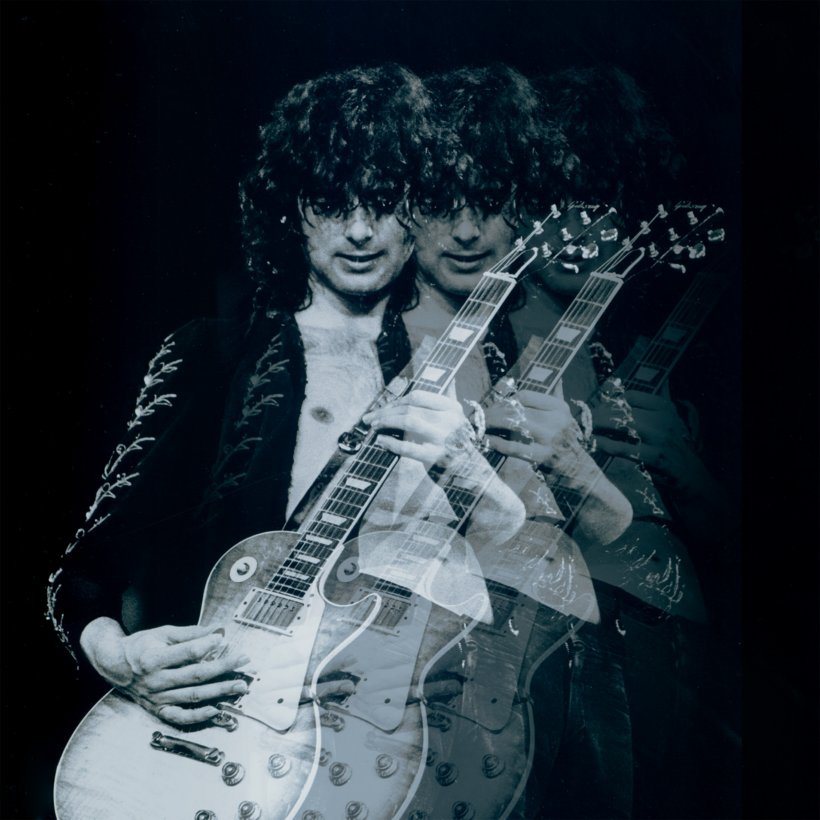On a snow-blown February afternoon in 1975, a limousine whisked Led Zeppelin guitarist Jimmy Page from the band’s hotel near Madison Square Garden, where they’d played a show the night before, down to Manhattan’s then shabby Bowery neighborhood. Arriving at 222 Bowery, Page trudged up the stairs to the fourth-floor loft of the renowned Beat writer William S. Burroughs for an interview about rock ’n’ roll and the exhilaration of wielding sound’s immense power. The conversation, recounted by Burroughs in the rock magazine Crawdaddy, sprawled from the Loch Ness Monster to dolphin communication to, eventually, sound that could kill.
Burroughs’s take on sound’s potential lethality was based on sensationalized media accounts of experiments by the French scientist Vladimir Gavreau, who had tested the effects of high-intensity infrasound (frequencies below what humans can hear) on himself and his colleagues in his lab, on the outskirts of Marseille, a decade earlier. The scientist theorized that just as a sustained high note can shatter a wineglass, sufficiently intense sound tuned to the very low “resonance frequencies” of vital organs might ultimately cause them to vibrate to their breaking point. I read about Gavreau’s work while researching my book Clamor: How Noise Took Over the World—And How We Can Take It Back, specifically for a chapter about the many health dangers of noise beyond hearing loss.
I was struck by society’s deep and abiding fascination with stories of deadly sound—from Homer’s man-eating Sirens to science-fiction thrillers such as Doctor Who, to the media frenzy around the 2016 “sonic attacks” on U.S. diplomats and spies in Havana, Cuba—despite little actual evidence of lethal acoustic force and the many accounts by experts in sound, biology, and weaponry enumerating the scientific and practical challenges to creating such weapons. Despite substantial investments by the world’s militaries and spy agencies, the only verified sound weapons are ones that simply aim old-fashioned loudness at the ear, such as the LRAD (Long-Range Acoustical Device), a specialized speaker that produces incredibly loud sound from a distance and is often used for crowd control.
Gavreau, for his part, tested only short bursts of his infrasound blasters (massive whistles made up of vibrating pipes up to 75 feet long) on himself and his labmates, an experience which he described, in dramatic terms, as quite painful and “very nearly lethal”—but failed to take any scientific measurements or conduct controlled trials. The Marseille authorities soon shut down the lab, not due to any threat of bodily harm but because the sounds shook the walls of nearby houses and set off incessant barking by neighborhood dogs.
Gavreau died in 1967, and while subsequent research has linked high doses of infrasound to a range of ailments, such as headaches, nausea, and difficulty breathing, nothing has come close to replicating his dramatic “findings.” Yet the legacy of his work has not only lived on but ballooned to terrifying proportions. According to South African biologist Lyall Watson’s 1973 book, Supernature, a scientific study of supernatural phenomenon, the first person to test Gavreau’s sound blaster “fell down dead on the spot” and “all his internal organs had been mashed into an amorphous jelly by the vibrations.” By the time Burroughs told the tale to Page, the infrasound weapon had grown powerful enough to “kill everyone in a five-mile radius.”
And yet, comparably, very little attention is given to the actual health harms linked to noise-induced chronic stress and sleep disruption, such as hypertension, heart disease, and stroke. The European Environment Agency has blamed long-term noise exposure for an estimated 12,000 preventable deaths a year across the Continent. New studies are discovering more hard evidence of the dangers presented by noise, but it’s still a tough toxicity to sell, particularly in America.
The most obvious reason for this paradox is that the cumulative, indirect, and often intangible impacts of stress and lack of sleep will never capture the same attention as an all-powerful sonic blaster, even if the former threat is far more real. But I suspect there’s also a more subtle reason—all of us have felt the raw power of sound personally, from a loved one’s voice after a long absence to a rolling clap of thunder on a summer evening. And music might be one of the best examples of sound’s power, making it easy to imagine, as Burroughs did, how a weaponized derivative of such power could be devastating.
While chatting with Page, Burroughs wondered if, along with the dry-ice smoke and laser shows, just a touch of intense infrasound could be mixed into music to—figuratively—melt the audience’s collective mind. After all, the goal of any good rock concert was to tap into the highly combustible nerve of the “mass unconscious,” he wrote in the piece for Crawdaddy. “Rock stars are juggling fissionable material that could blow up at any time.”
Chris Berdik is a science journalist and a former staff editor at The Atlantic and Mother Jones


